Due to the wide skeleton palette of flowers and diverse form of inflorescences, as well as a rich and long period of flowering, the tree hydrangea is increasingly used when landscaping the country area of \u200b\u200ba country house, a country area, park zones. However, the full beauty of hydrangea can be enjoyed, only observing a number of nuances relating to planting and leaving the plant.
Content
general characteristics
The tree hydrangea is a splashing shrub, the height of which depends on the varietality and varies within 1-3 m.
Croon plants completely covered with an impressive sized inflorescences, each of which is 20-30 cm. In this case, in a separate inflorescence, there are both small fertile, located in the center and larger sterile flowers. However, the size of the largest flowers of inflorescences rarely exceeds 3 cm.
Volumetric leaves having an ovoid or elliptical shape complement the decorative characteristics of the hydrangea of \u200b\u200bthe tree, the photo is a visual confirmation. In addition, some grades of hydrangea leaves retain a saturated green color to the most frosts, and others at the end of the summer acquire a reddish tint.
Hydrangea tree is ideal for creating alive hedges and flower arrangements, wonderful combined with lilies, clematis and roses.
Varieties of tree hydrangea
To date, a sufficiently large number of tree hydrangeas are derived. However, only the most decorative and frost-resistant hydrangeas are popular with popularity.
The varieties of plants using the greatest demand for gardeners:
- "Annabel". White or cream flowers are assembled into spherical inflorescences, the diameter of which reaches 20 cm. As a rule, the height of the tree hydrangea does not exceed 1.5 m, although in the volume it takes up to 3 m. During the flowering period lasting from June to September, plants stems Gradually tend to earth, without holding the severity of flowers. An important feature of the variety is the immutability of the initial color of foliage until the onset of frosts;
- "Grandiflora" - obtained by selection of the "Annabel" variety. The distinctive features of the variety are inflorescences formed by larger flowers, and cream or lemon colored petals. Under favorable cultivation conditions, the height of the bush reaches 1.5-2 m. The duration of flowering is observed since June-September;
- "Incredibl" - stands out even larger flowers in inflorescences than "Grand Flor." However, the attractiveness of the "Incredibl" variety is to change the original color of the petals over time with greenish on pure white. The height of the adult bush varies within 1.5 -3 m. However, the stems of hydrangea do not have sufficient strength, therefore, during flowering, it is started to hang under the severity of large inflorescences that sometimes reach 30 cm in diameter;
- "Invinsibelle" - among many varieties of hydrangea of \u200b\u200bthe tree, stands out by dark pink inflorescences, in shape resembling lilac sprigs. However, under the influence of sunlight, the inflorescences gradually lose color saturation, acquiring a slightly pinkish shade;
- "Pink Pinkish" - differs in quite compact dimensions, the width is only 1.5 m with a height of the bush not more than 1.2 m. Pink-white flowers collected in the inflorescence of the pyramidal shape, retain coloring throughout the entire period of flowering;
- "Sterilis" - has a high resistivity of cuttings, an accelerated growth rate and abundant blooming from July to October. Like a variety "Incredibly", greenish painting of petals gradually replaces purely white. The height of the tree hydrangea "Sterilis" is about 2 m. In this case, the width of the bush grows up to 2.5 m;
- "Hayes Starberst" is characterized by good frost resistance and blooms from early June until the first frosts. A characteristic feature of a variety is a domed form of inflorescences formed by terry flowers, on the background of bright green color leaves, retaining decorativeness to late autumn. The height of an adult bush "Hayes Starberst" reaches only 1.2 m. At the same time, the stems of hydrangea have sufficient strength to withstand a rather big volume of inflorescences.
Thus, the variety of forms and paintings of inflorescences without difficulty can pick up the necessary variety, which will ideally look both in solitary design and in garden compositions. However, the varietal signs of the plant largely depend on the fertility of the soil, the level of humidity, timely trimming and other factors.
Planting a tree hydrangea
Selection of places for landing
Abundant, along with the duration of blossom, depends not only on the variety of plants, but also from the correctly selected place for the future landing, which should:
- it is desirable to light well - it is desirable that in the morning and in the evening the hydrangea drew in the sun, and during the period of solar activity - in onest. If the plant is all day to be under the scorching sunshine, then the flowering period will be reduced by 3-5 weeks. At the same time, hydrangea growing in a permanent shadow will delight the owner with smaller inflorescences and flowers in relation to varieties;
- protected from gusty winds. The stems of most of the tree hydrangeas under the weight of huge inflorescences eventually begin to lay down to the ground, and in the open space, a strong wind immediately spreads a bush on different directions of the rhizomes and the spectacle will be far from aesthetic;
- it is not less than 2-3 m from neighboring trees that absorb the necessary supply of water.
Thus, the most suitable place for landing hydrangea is the northern side next to any structure.
Preparation of soil
Like any plant, the hydrangea tree prefers a certain type of soil. On acidic or weakly acidous sublibious soils, a full splendor of the plant is observed, accompanied by abundant flowering, as well as saturated coloring leaves and petals. Absolutely not suitable for hydrangea alkaline soils, as evidenced by various diseases of the plant and scarce flowering.
To acidify the soil and make it suitable for the cultivation of hydrangea today it is possible by entering into the soil of pine crust, peat, sawdust and other organic organic, and even better a year before the upcoming fit.
Preparation of planting material
Breeding on the hydrangea section of the tree is carried out in several ways:
- acquisition of ready-made seedlings. The best time for buying is an early spring when the buds have not yet begun to bloom. Before boarding the soil, the acquired sapling must be held for about an hour in warm water with a small addition of manganese;
- cuttings. The workpiece of Chenkov is carried out at the end of June or early July in the morning, when the leaves are sufficiently saturated with moisture. As a material, unreserved annual shoots are used, when you cut, you need to pay attention to each cutlery contains 1-2 interstices. Leaves from harvested cuttings are shortened by half to avoid excessive evaporation of moisture. The lower cutting cutting is treated with "rhoin" or other similar to the drug that promotes the speed of rooting. The prepared stalk is placed in a container with a substrate consisting of sand and peat in proportion 1: 2, at a depth of 2-3 cm at an angle of 45 ° C. The distance between the cuttings should be 7-10 cm, since the roots of the plant are located horizontally. When complying with the conditions of landing, the rooting of Chenkov takes about a month, so in August they can be planted into the ground;
- digging. For receiving, side annual shoots are used, next to the trench of a depth of about 10 cm. The selected escape is stacked into the prepared recess, fixes with a pin, made of wire, and is satisted with a small layer of land. The land around the chain is necessary to periodically loose, water, and in the spring of next year the escape will need to be separated from an adult bush and put on a permanent place.
Landing in sad
It is necessary to start the seedlings and grooves of tree hydrangea to plant the seedlings, when the land has already been excited, but the kidneys have not yet blocked.
The planting process of seedlings is as follows:
- dig a hole about 70 cm deep and 50 cm wide;
- when landing several seedlings, it is necessary to place them at a distance of 1.5 m from each other, since the roots of the plants do not go deep into the depth, but are placed horizontally;
- fill over the hole of the previously prepared soil consisting of peat, humoring, sand and chernozem in proportion 1: 2: 1: 2;
- take out a clumsy seedling and slightly shorten the roots, and also get rid of damaged branches and leaves;
- we place a seedling in the well, carefully straightening the roots in different directions;
- fall asleep the earth, blocking the root neck for no more than 3 cm;
- tightly tamper the earth to eliminate the formation of voids near the root system that lead to root drying;
- we abundantly water, moisturizing the earth to a depth of 40-50 cm.
Under all the conditions for the preparation of the original material for planting the material, the bloom is observed only for 4-5 years.
Thus, the hydrangea is a tree, the landing of which is the same for any planting material, differs only by the period of landing into the ground, since the grooves are planted for a permanent place in a year after rooting.
Plant care
Like any plant, hydrangea of \u200b\u200btree care in the form of feeding, mulching, watering and trimming is necessary constantly.
Furinations Hortensia
The general condition of the plant, as well as the abundance of flowering, depends largely on the timeliness of the feeding, especially at low soil fertility.
The necessary feeders can be divided into 3 stages:
- after 2 weeks, from the moment of planting a plant in the ground, a plant is completed, consisting of a mixture of potassium sulfate (25 g), urea (20 g) and superphosphate (40 g). The frequency of holding - annually in early spring, and with fertile soil it is enough to fertilize in a year;
- during the formation of buds, it is required to feed the hydrangea mineral and organic fertilizers. For this purpose, ready-made drugs like "Kemira-Flower" type, which contains various macro and trace elements, the necessary hydrangeas. An alternative is a fertilizer comprising 50-60 g of superphosphate and 30-40 g of potassium at the rate of 1 m². It is not worth exceeding the dosage of nitrogen, because its oversupply entails the change in the color of petals with a predominance of a greenish shade. In addition, the stubble in the nitrogen of hydrangeas is significantly reduced by frost resistance, which can entail the death of the plant after harsh winter;
- the final feeding at the end of August is to introduce 15 kg of overworked by 1 m² into the soil.
From the beginning of September, all feeding should be stopped to stop the stems of the hydrangea to warn to winter.
Watering hydrangea
Despite the fact that the roots of the plant grow horizontally, in warm and especially sultry days, hydrangea should be poured every 2 days, moistening the soil at 50-60 cm in diameter 1 m, thereby creating a small moisture supply. In addition, 1 time per month, throughout the season, the bushes need to water water with a small addition of manganese to increase the strength of current shoots.
Mulching hydrangea
An integral way to care for hydrangeas is mulching, preventing overheating of the plant in sultry weather. In addition, by mulching, it is possible to get rid of part of weeds that deprive the hydrangea of \u200b\u200bthe supply of water and part of the nutrient elements.
With spring mulching under the hydrangea bus, it is desirable to plug a small peat layer, about 10 cm, or a mixture of compost with sawdust, which increase the soil acidity, creating favorable conditions for growing plants.
Pruning hydrangea
Hydrangea bush grow pretty quickly, so pruning plants must be carried out in spring and autumn annually. Pruning is produced no earlier than 3-4 years after landing, since young plants have increased slurred in the spring and any damage to escape can entail the death of the entire plant.
There are 4 stages of spring trimming:
- prevention is an inspection of a bush for the presence of broken, frozen branches and their removal;
- rejuvenation - intended for plants growing over 5 years. The rejuvenation process is to remove old escapes that consume a large supply of nutrients and impede the normal development of new shoots;
- formation - the processes of the previous year are to shortening up to 3-4 pairs of kidneys;
- sular - getting rid of small shoots that do not form inflorescences, but only thickening the bush and take the nutrients from hydrangea.
Timely trimming of hydrangea is necessary to give a bodice of a certain form, improving flowering, as well as adjusting the number of inflorescences.
In the autumn period, when the hydrangea is swinging, you need to remove faded and dried inflorescences.
Shelter for winter
Despite the ability of the freshest hydrangea to recover, it is better not to risk and take measures to shelter with the onset of periodically repeated frosts. For this you need:
- remove with a bush undelated foliage;
- the base of hydrangea is poured with sawdust;
- put around bush board and attach plants with rope stalks to them;
- to cover the cellophane and fall asleep with sawdust.
Such a shelter will accurately keep the viability of the plant even with the most severe winter.
Thus, hydrangea is a tree, landing and care for which requires a significant amount of time, will be for a long period to please the owner with its decorative species.

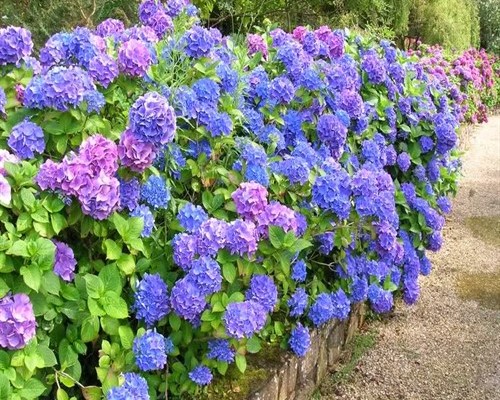
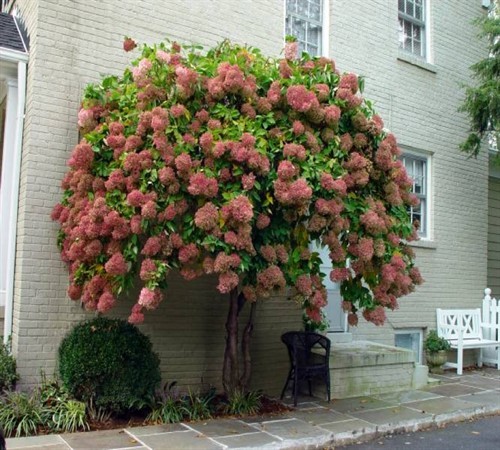

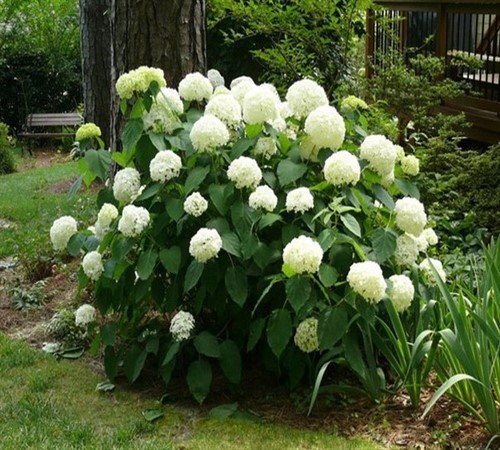


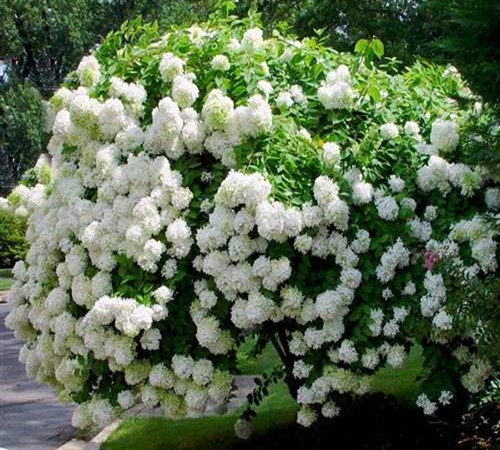
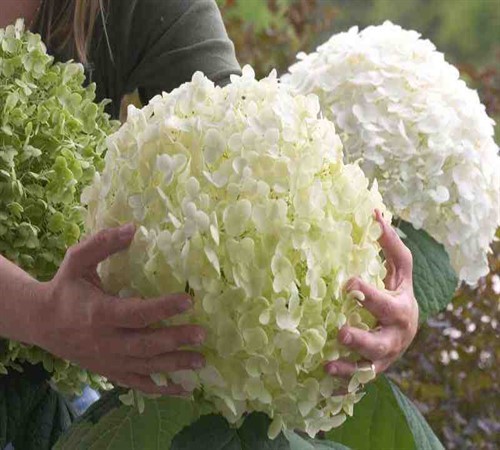

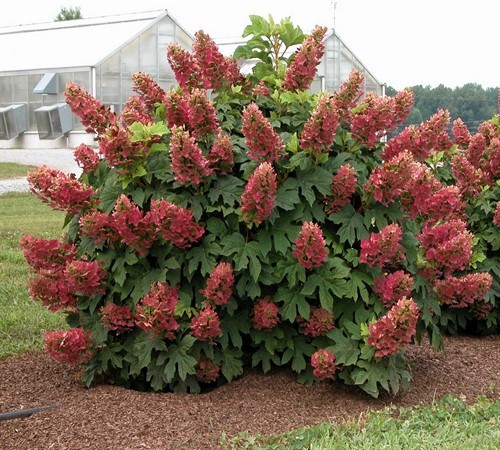
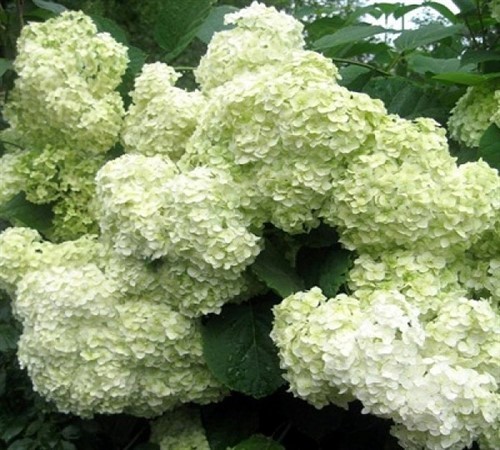
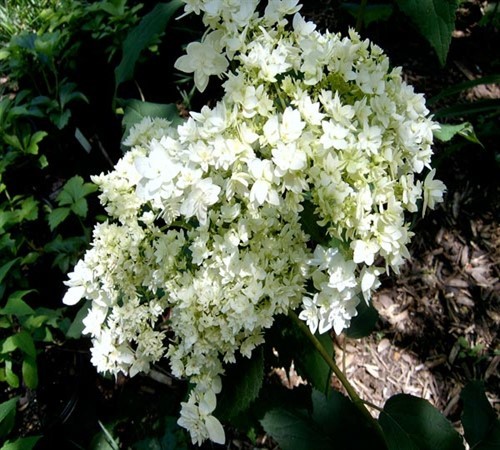
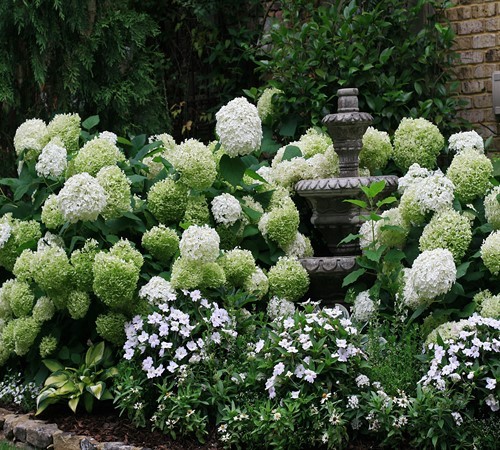
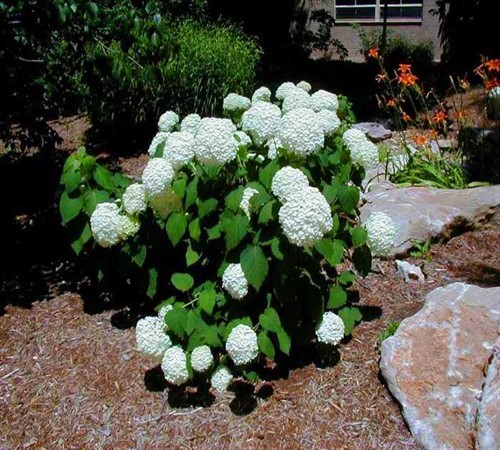

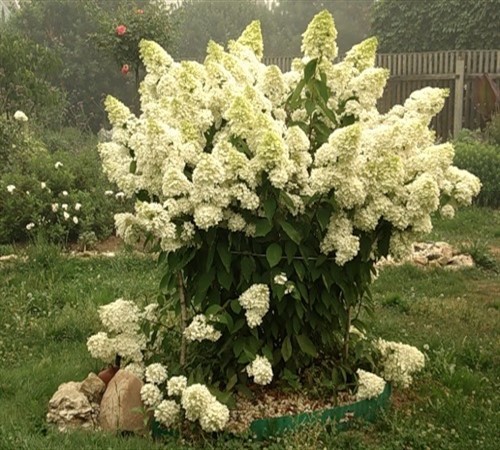

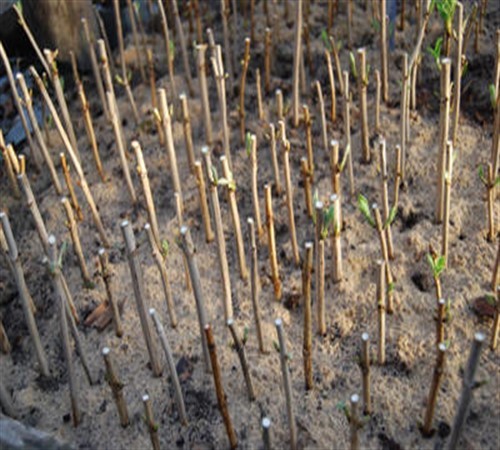
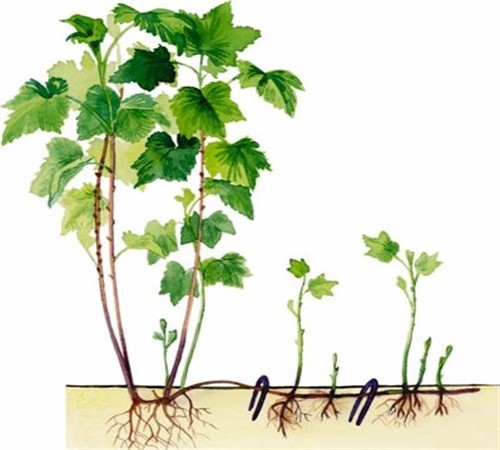
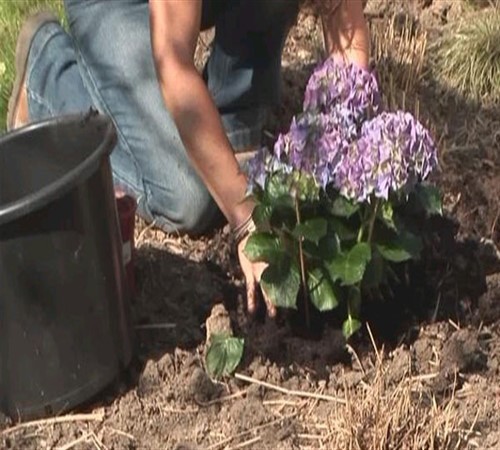
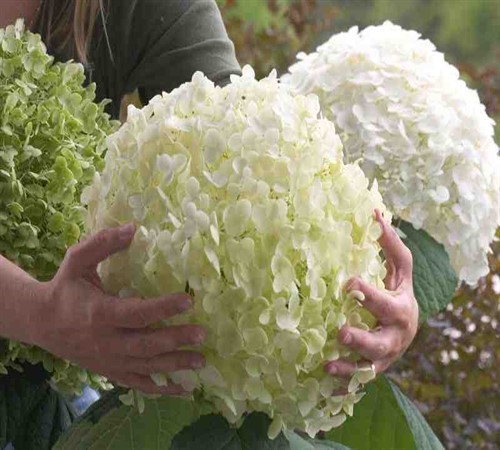
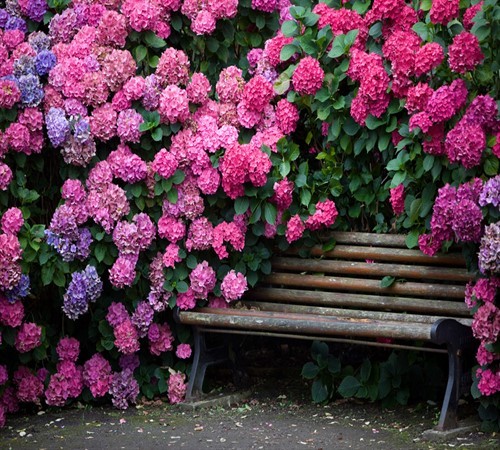
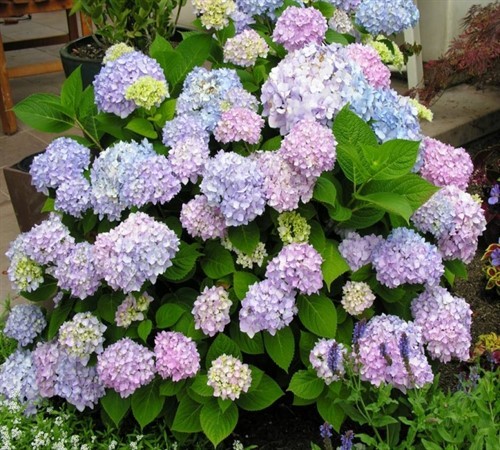
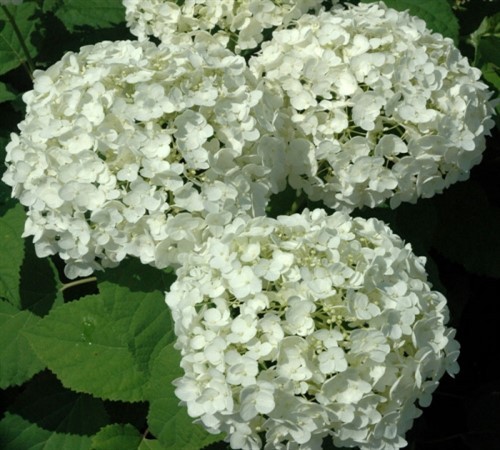
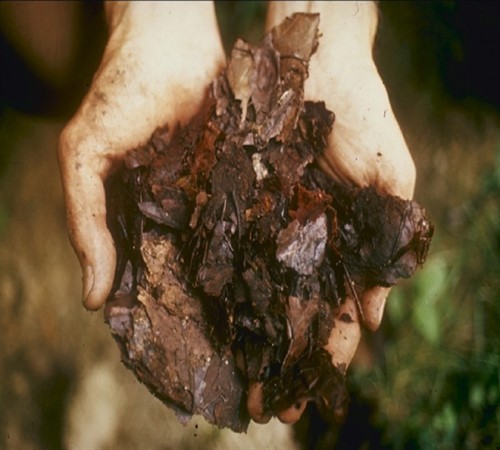

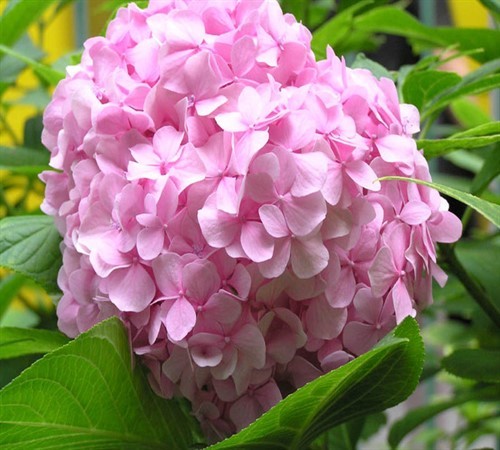

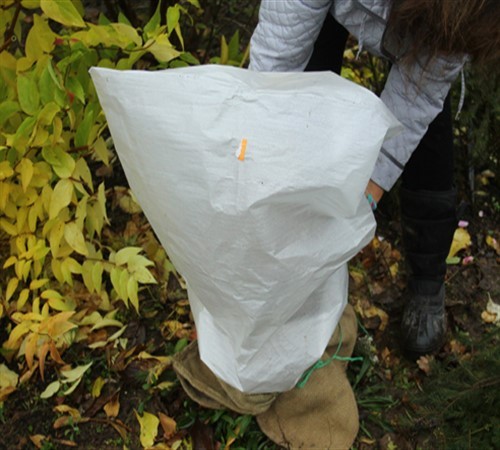
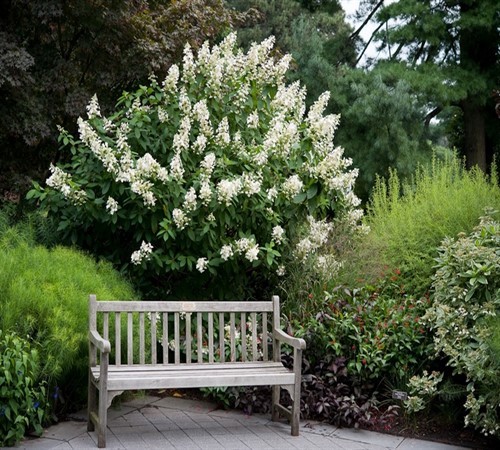


















If we are talking about the tree hydrangea, then why the information about the tree of hydrangea is accompanied by photographs of large-scale and burbent hydrangea.